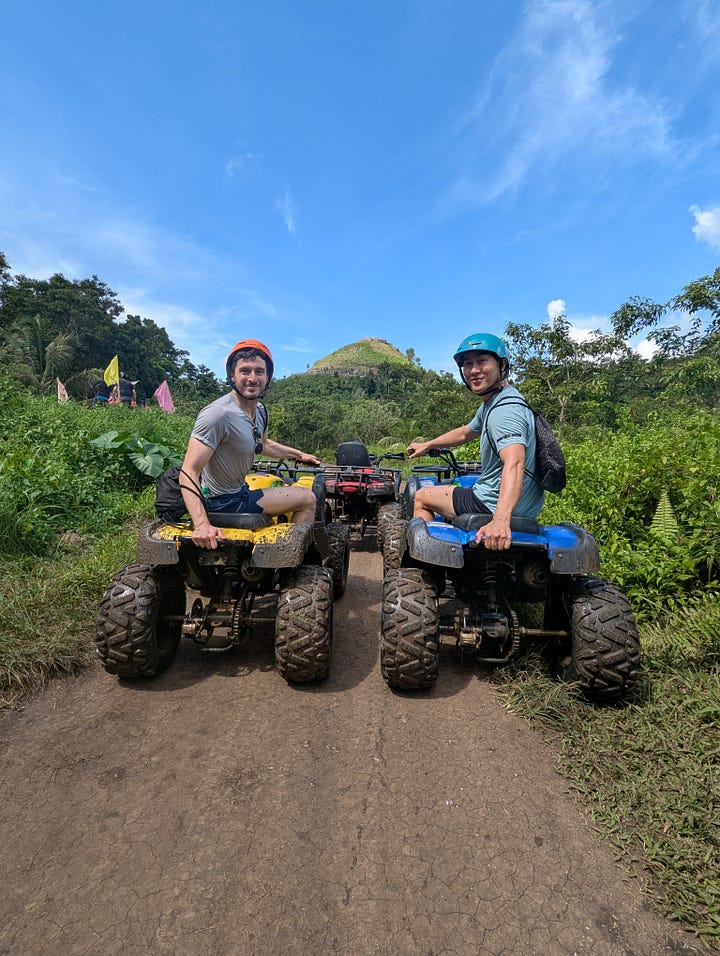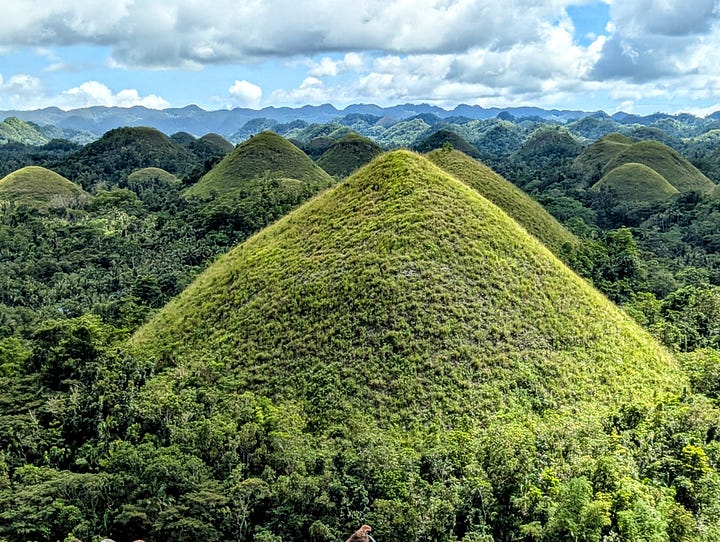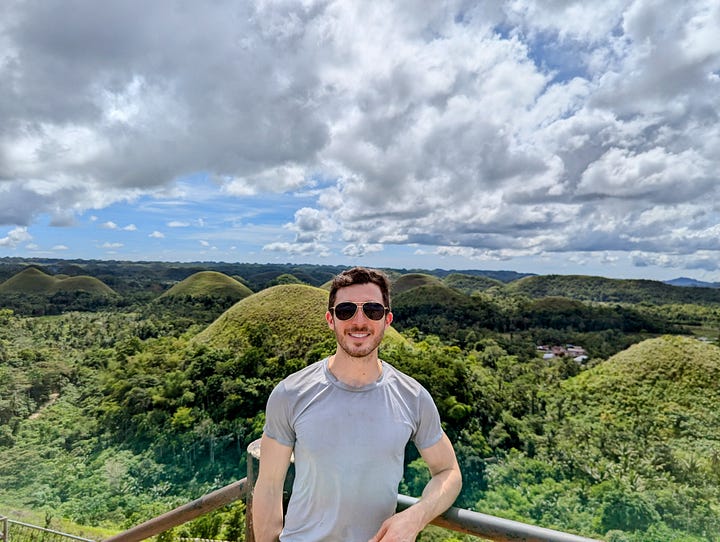Island Dwarfism: The World's Smallest Primate, With Giant Evolutionary Adaptations
Within their final refuge, the Philippine tarsier, a creature with eyes the size of its brain and a head that can swivel almost 360 degrees, clings to the branches...and to existence itself.
📍 Bohol Island, Philippines
On the Philippine island of Bohol, beneath a canopy of bamboo and dense foliage, I encountered a marvel of miniaturization: the Philippine tarsier. At just 85 to 160 millimeters long, with a tail that doubles their size, they weigh about as much as an apple — yet carry the weight of evolutionary history in their diminutive form.
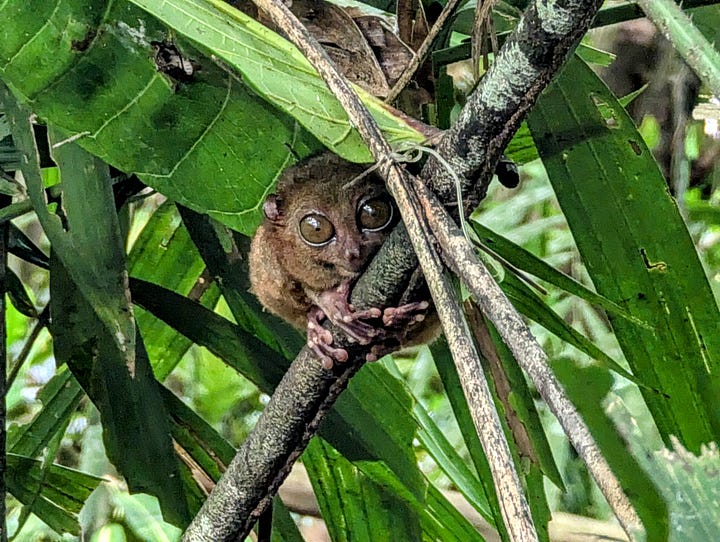
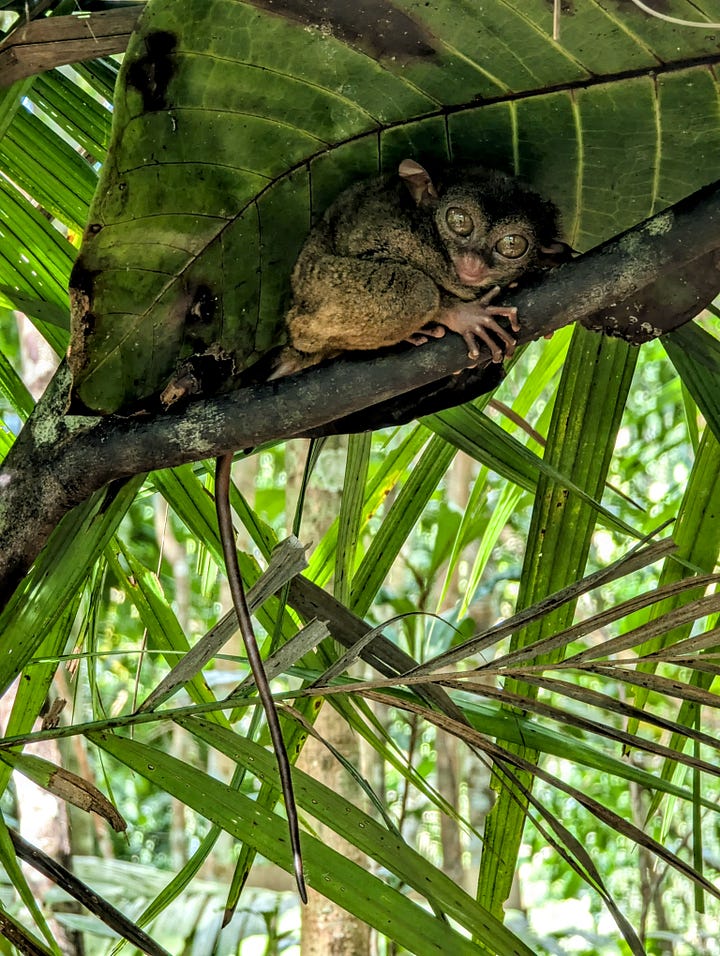
Tarsiers, the world's smallest primates, are found only on Bohol and a few surrounding islands. These tiny creatures are prime examples of "island dwarfism"— a phenomenon where the limited resources of isolated island life result in species evolving to be smaller. Miniaturization allows them to thrive in environments where larger competitors, needing more food and being more visible to predators, might struggle.
Numerous examples of island dwarfism exist, but few have survived human hegemony over the natural world. The Channel Islands, an archipelago off the French coast of Normandy, once hosted pygmy mammoths that stood only about 1.7 meters tall at the shoulder. Mediterranean islands like Sicily and Cyprus were once home to dwarf elephants, while Madagascar had diminutive hippos.
But some case studies of island-bound adaptations remain. The Key deer of the Florida Keys is a more petite relative of the mainland white-tailed deer. The Island scrub jay of Santa Cruz Island off the coast of California is smaller than its mainland relatives. And the Australian island tiger snakes have reduced body size and venom glands.
As for the tarsiers, both their smallest and biggest features are deftly Darwinian, including, and most noticeably, their enormous eyes. Measuring 16 millimeters in diameter, they are the largest eyes relative to body size of any mammal in the world, each roughly equivalent to the size of its brain. Their eyes are perfectly adapted for nocturnal hunting, further aided by their bat-like ears, which twitch and swivel independently at the faintest sounds of prey. Even more, their heads can swivel almost 360 degrees in an owl-like maneuver, providing a panoramic view of both prey and predators. And their powerful hind legs, much longer than their front legs, are coiled like springs. In a blink, they can launch up to 40 times their body length with acrobatic prowess, propelled by elongated tarsal bones, for which tarsiers are named.
The tarsier diet is exclusively carnivorous: insects, small lizards, and birds fall prey to its swift, silent attacks. With long fingers equipped with adhesive pads, they cling effortlessly to branches — perches from which they both hide by day and stalk their next meal by night. Tarsiers are solitary by nature, though some species form small family groups. In the dark, where communication is key, they emit a range of high-pitched calls and ultrasonic vocalizations, most beyond human hearing.
Sadly, tarsiers show how even the shrewdest adaptations cannot guarantee a species' future in a world of human hegemons. Habitat loss and illegal hunting have rendered all tarsier species threatened. Once widespread across Asia, Europe, and North America, tarsiiform primates have dwindled to isolated pockets in Southeast Asia. The last official sanctuary for these primates on Bohol Island is named after Carlito Pizarras, the Filipino field biologist who dedicated his life to protecting them.
Leaving the sanctuary, I reflected on the Philippine tarsier's anatomical uniqueness and inevitable vulnerability — a creature small in stature but grand in its evolutionary legacy. With the impact of geographical isolation etched in their DNA, tarsiers are tiny capsules of the origin of species.
🕹 Travel tips: The tarsiers are only the beginning of Bohol’s zoological, geological, and entomological (insects) anomalies. When in Bohol, don’t miss the following.
The Chocolate Hills: a formation of over 1,500 cone-shaped hills, covered in lush green grass, transforms into a rich chocolate brown during the dry season, creating a landscape unlike any other. The ATV tour here is a must!
